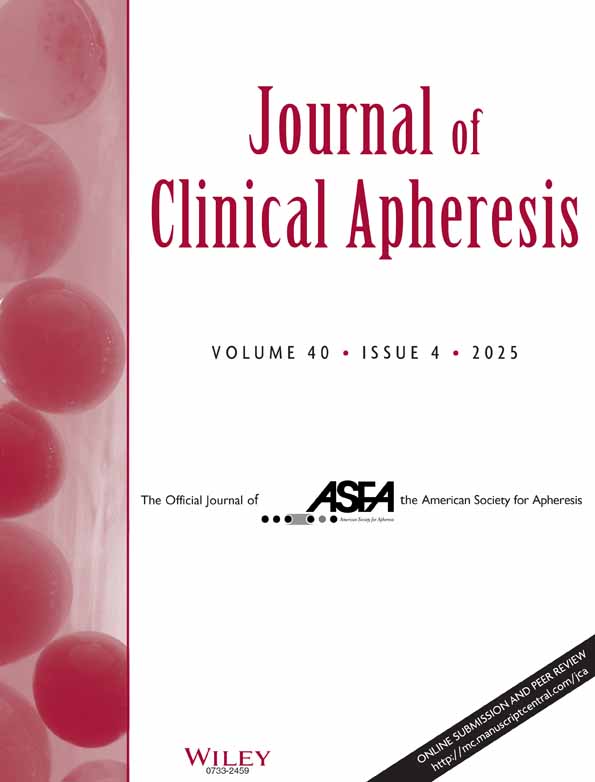Extracorporeal photopheresis reduces the number of mononuclear cells that produce pro-inflammatory cytokines, when tested ex-vivo
Abstract
Extracorporeal photopheresis (ECP) has been shown to be clinically effective in the treatment of many T cell–mediated conditions. ECP's mechanism of action includes the induction of apoptosis and the release of pro-inflammatory cytokines. Recently, we have observed early lymphoid apoptosis, detectable immediately post ECP. We were interested to determine what influence ECP has on pro-inflammatory cytokine secretion at this early pre-infusion stage. Samples from 6 cutaneous T cell lymphoma (CTCL) and 5 graft versus host disease (GvHD) patients were taken pre ECP and immediately post ECP, prior to re-infusion. Following separation, the PBMCs were added to a cell culture medium and stimulated with PMA, Ionomycin, and Brefeldin A for 6 hours. Using flow cytometry, intracellular cytokine expression of IFNγ and TNFα was determined in the T cell population. The monocytes were evaluated for IL6, IFNγ, IL12, and TNFα. For both patient groups, the number of IFNγ-expressing T cells fell significantly at re-infusion, whilst both T cell- and monocyte-expressing TNFα levels were reduced at re-infusion. All other cytokines tested showed no significant change post ECP. For GvHD, pro-inflammatory cytokines have a pathological role. Their down-regulation may have a direct clinical benefit. However, the reduction in the number of IFNγ- and TNFα-expressing mononuclear cells means, at this early stage, it is unlikely that these cytokines assist in the removal of the malignant Th2 cells present in CTCL. J. Clin. Apheresis 17:177–182, 2002. © 2002 Wiley-Liss, Inc.




